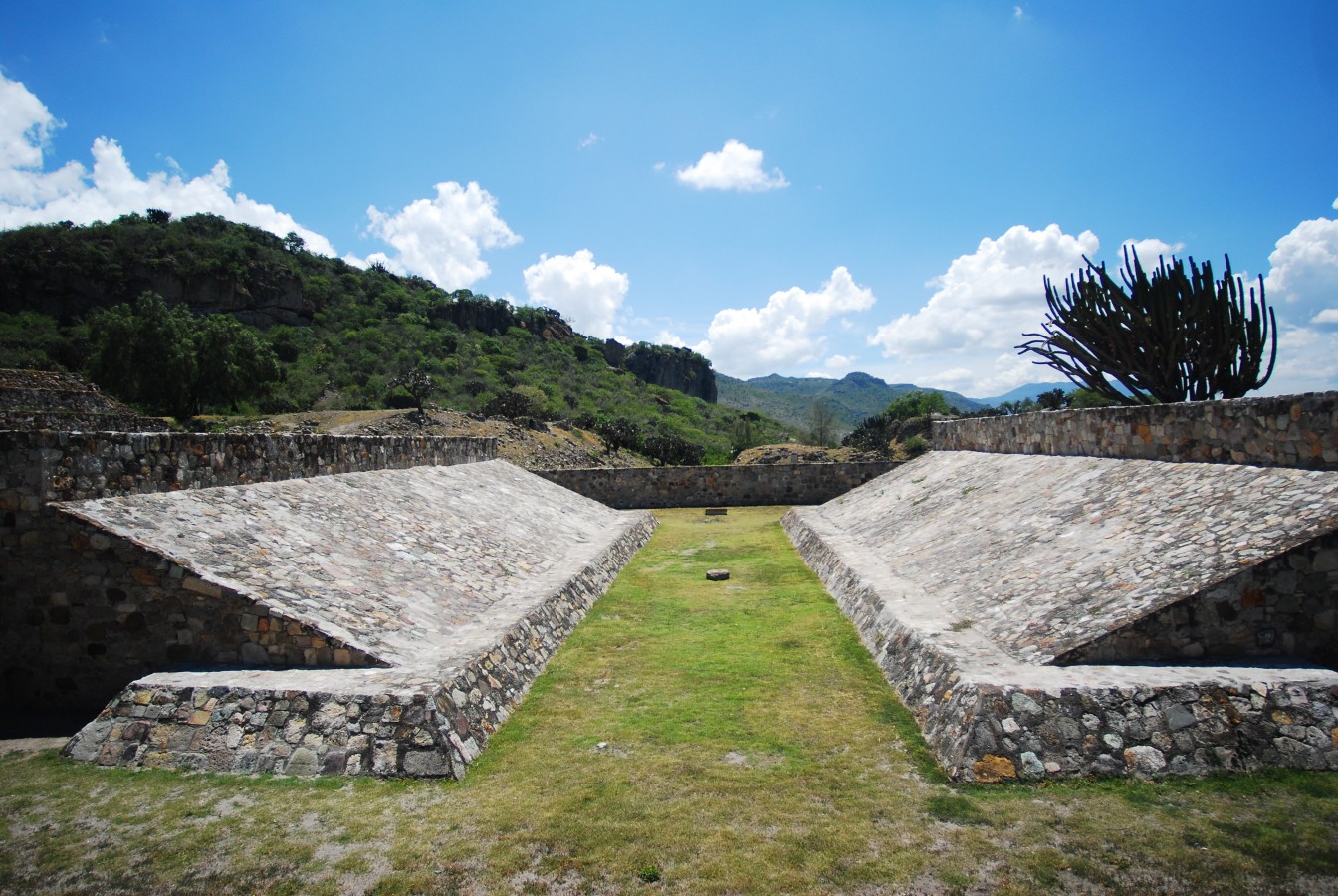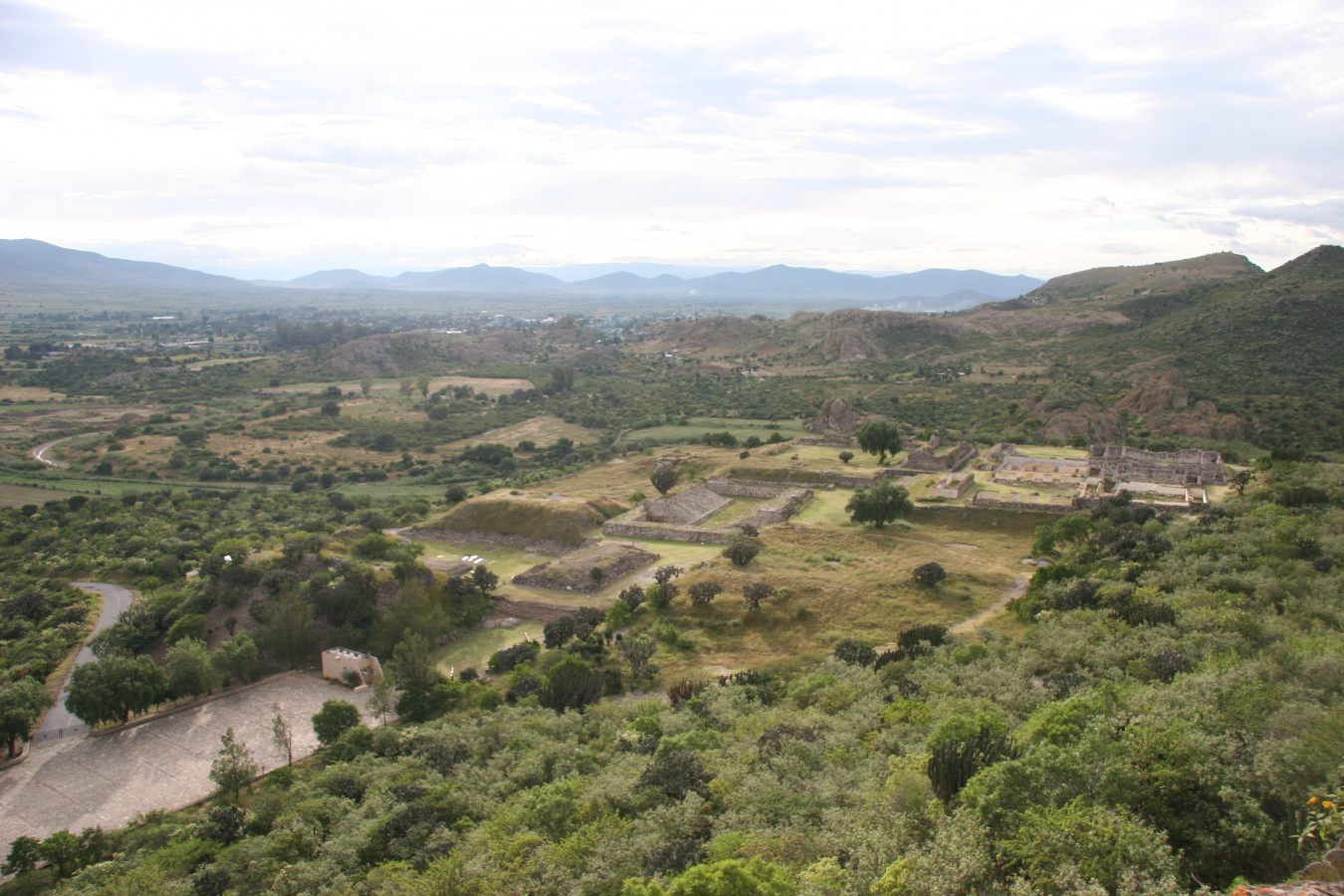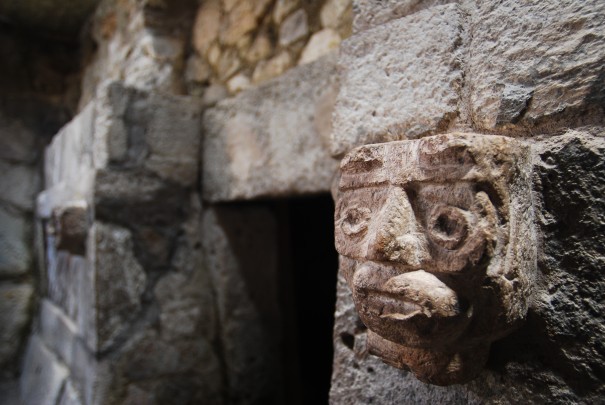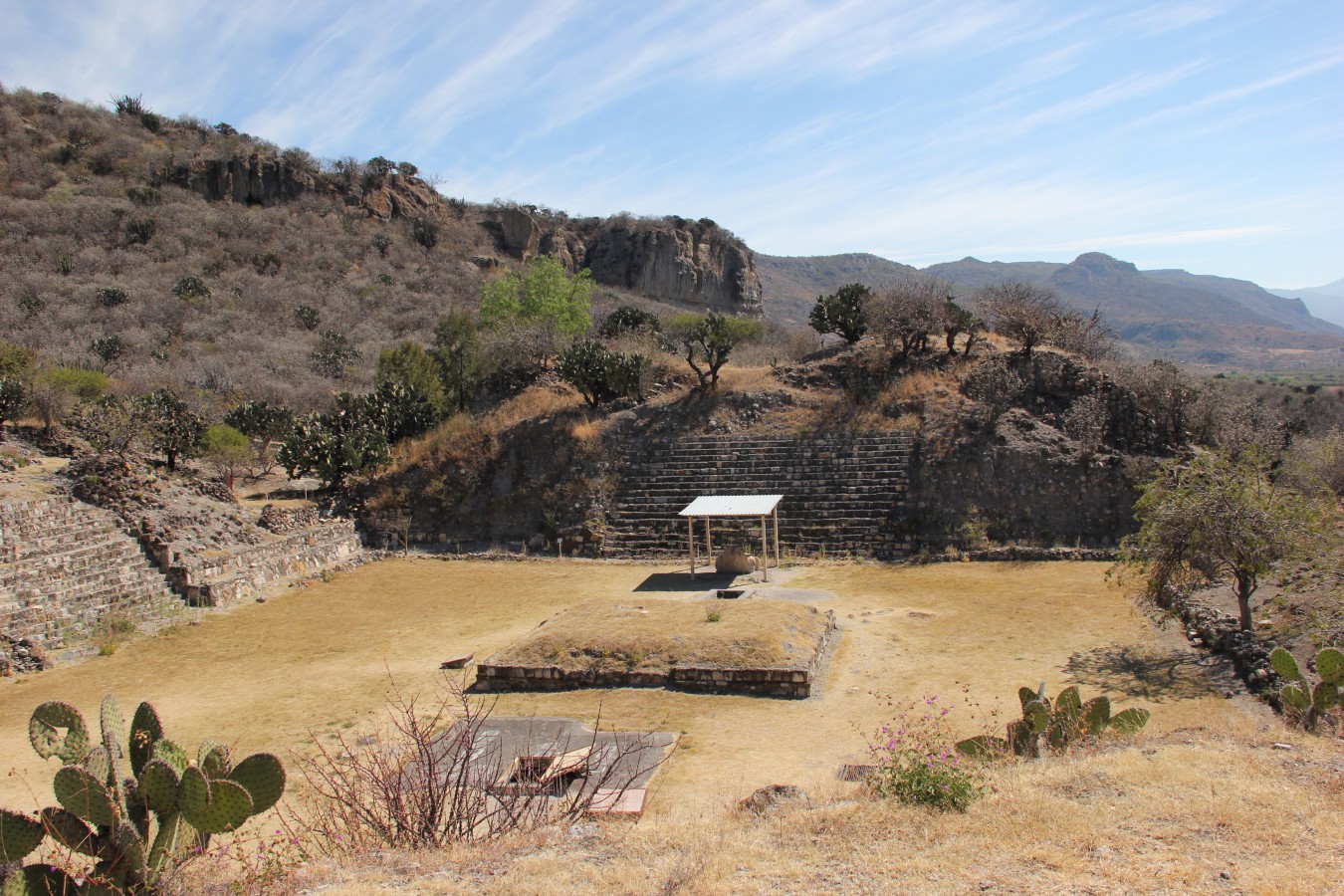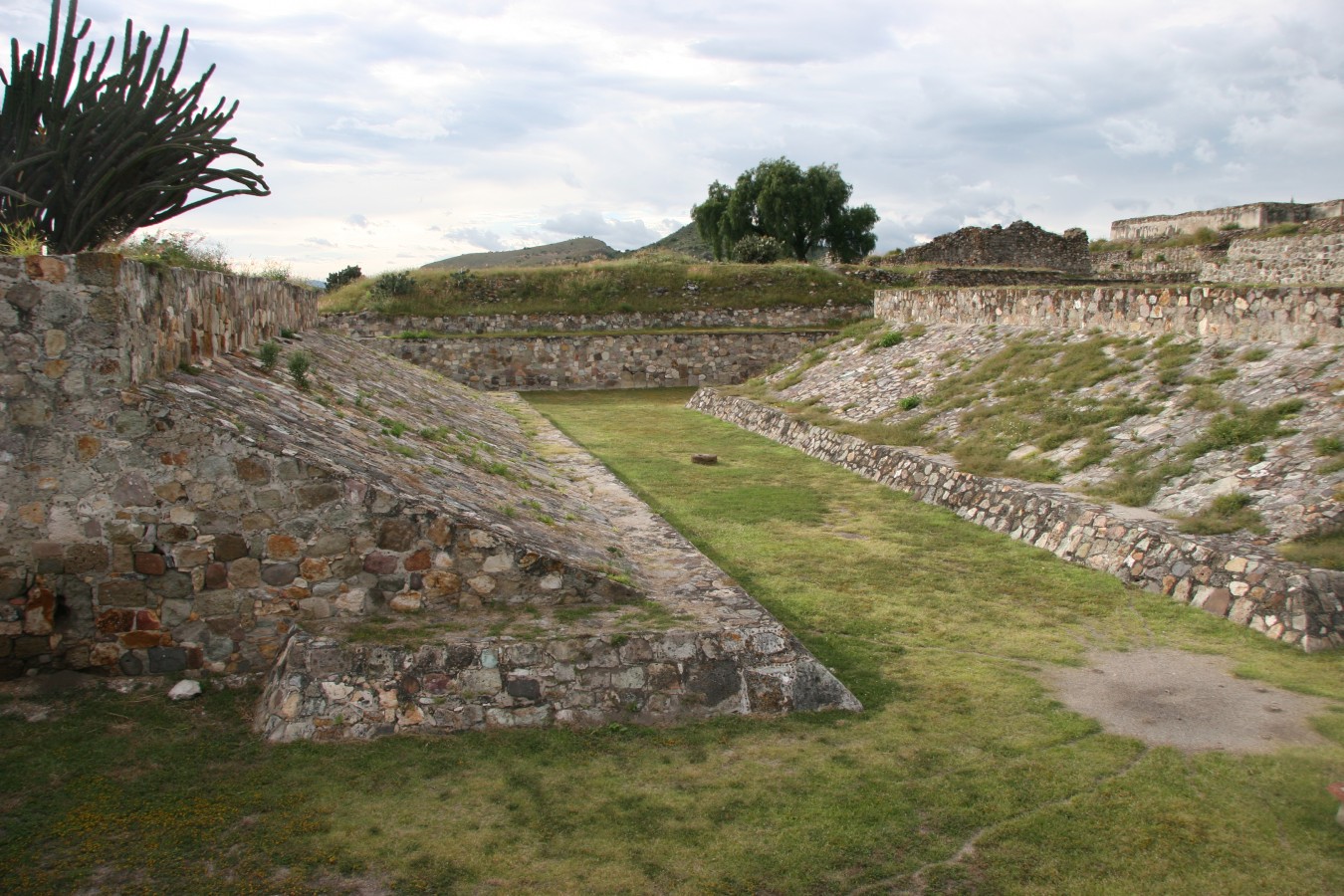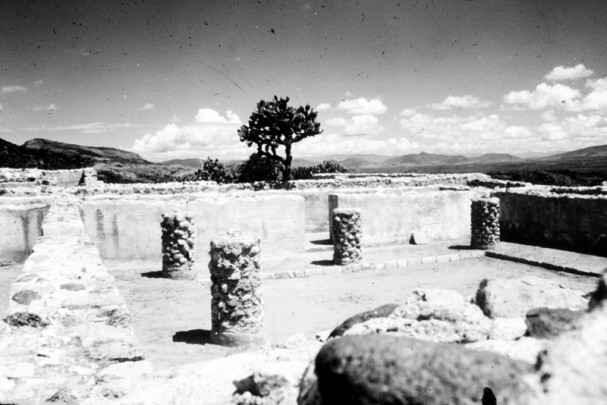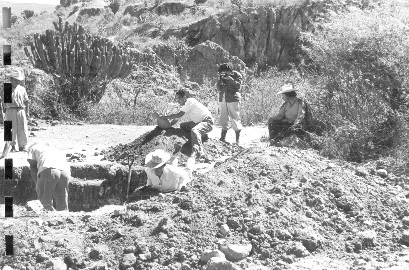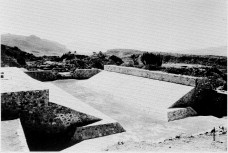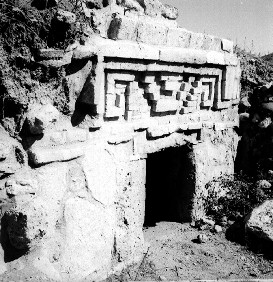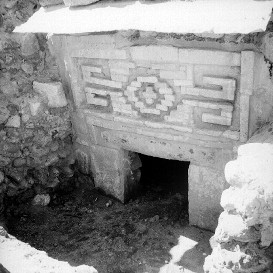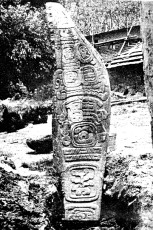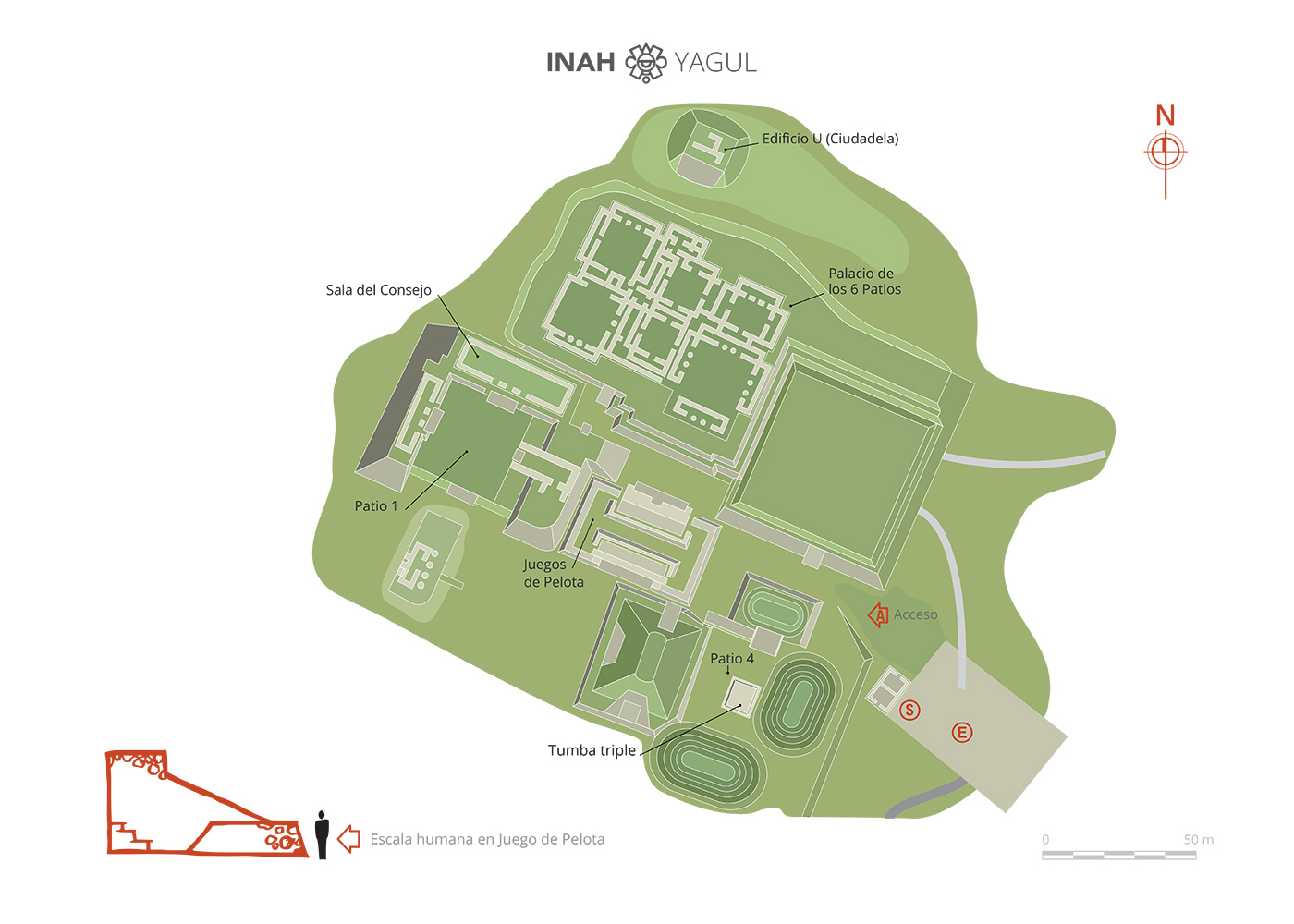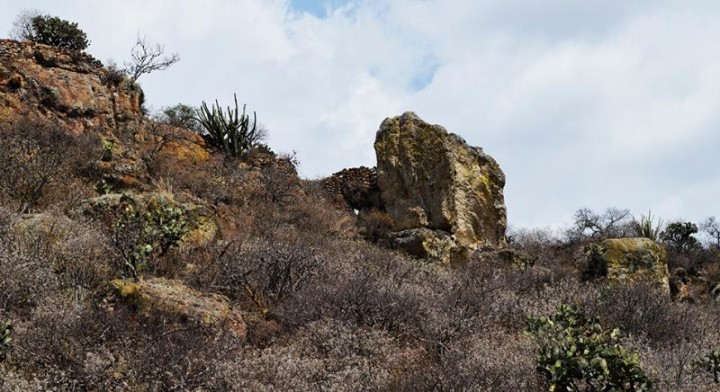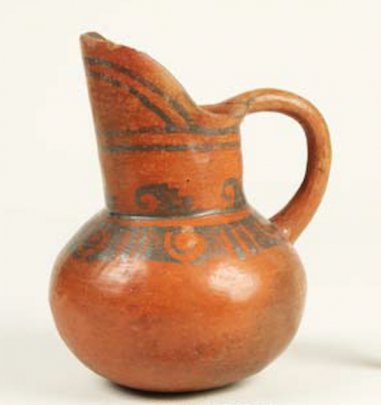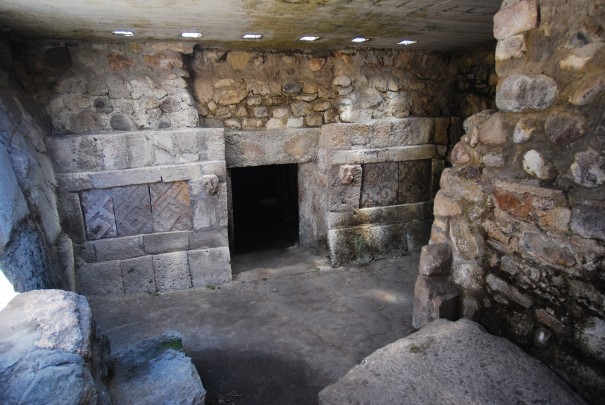Yagul
Old tree
In the tenth century AD, the early inhabitants of the region of Yagul built communicating platforms across the hills that surround the Caballito Blanco plateau. On top of these they built pyramids, palaces, sepulchres and a great ballcourt. At one time they were all painted red, and they still astonish us to this day.
About the site
When Monte Albán fell into decline in approximately 850 AD, a series of sites in the central valleys of Oaxaca became more important. The Zapotec city of Yagul (“old tree”) in the Valley of Tlacolula was one of them.
The area had been occupied for centuries before the current era by hunter-gatherers who took shelter in the caves of the mountains at the foothills of the Caballito Blanco plateau. These caves and their rock paintings, which now constitute the Prehistoric Caves of Yagul and Mitla site, were added to the UNESCO World Heritage List as a Cultural Landscape in 2010. The remains also bear witness to their transition to a farming lifestyle. Cucurbitaceae (squash) seeds more than 10,000 years old have been found in the Guilá Naquitz cave, which are the earliest remains of domesticated plants discovered to date in the Americas, as well as fragments of corn cobs and kernels, which are some of the oldest evidence of this plant’s domestication.
From the tenth century onwards, the inhabitants of the town of Yagul constructed a series of artificial platforms on one of the rocky massifs that dominate the valley, upon which they erected complex buildings linked by well-defined pathways. The floors and walls of these buildings have a fine layer of red-painted stucco. Yagul was where the architectural tradition began of decorating the faces of walls with meander pattern mosaic friezes, which reached the height of its splendor in the monuments of Mitla.
Its most outstanding buildings include the Palacio de los Seis Patios ("Palace of Seven Courtyards"), the Acropolis or set of courtyards with tombs (several of these also bear vestiges of mural painting), and the imposing Ballgame Court, which is the largest in the Valley of Oaxaca. The Zapotecs also erected a fortress at Yagul. This was a long wall that provided a series of lookout posts and defensive positions when combined with the natural elevations of nearby hills and mountains, which is evidence of the warlike environment prevailing at the time.
The area had been occupied for centuries before the current era by hunter-gatherers who took shelter in the caves of the mountains at the foothills of the Caballito Blanco plateau. These caves and their rock paintings, which now constitute the Prehistoric Caves of Yagul and Mitla site, were added to the UNESCO World Heritage List as a Cultural Landscape in 2010. The remains also bear witness to their transition to a farming lifestyle. Cucurbitaceae (squash) seeds more than 10,000 years old have been found in the Guilá Naquitz cave, which are the earliest remains of domesticated plants discovered to date in the Americas, as well as fragments of corn cobs and kernels, which are some of the oldest evidence of this plant’s domestication.
From the tenth century onwards, the inhabitants of the town of Yagul constructed a series of artificial platforms on one of the rocky massifs that dominate the valley, upon which they erected complex buildings linked by well-defined pathways. The floors and walls of these buildings have a fine layer of red-painted stucco. Yagul was where the architectural tradition began of decorating the faces of walls with meander pattern mosaic friezes, which reached the height of its splendor in the monuments of Mitla.
Its most outstanding buildings include the Palacio de los Seis Patios ("Palace of Seven Courtyards"), the Acropolis or set of courtyards with tombs (several of these also bear vestiges of mural painting), and the imposing Ballgame Court, which is the largest in the Valley of Oaxaca. The Zapotecs also erected a fortress at Yagul. This was a long wall that provided a series of lookout posts and defensive positions when combined with the natural elevations of nearby hills and mountains, which is evidence of the warlike environment prevailing at the time.
Map
Did you know...
- Yagul was one of the urban centers in the Valley of Oaxaca that remained populated through the Early Postclassic period.
- It was one of 20 independent and competitive city-states in the Valley of Oaxaca during the Late Postclassic.
- It was explored for the first time between 1954 and 1961 by Ignacio Bernal, Lorenzo Gamio and John Paddock.
- The area’s population was relocated by the Spanish in the sixteenth century to found Santiago Tlacolula (now Tlacolula de Matamoros).
An expert point of view
...or how the Zapotecs constantly innovated in their architecture.
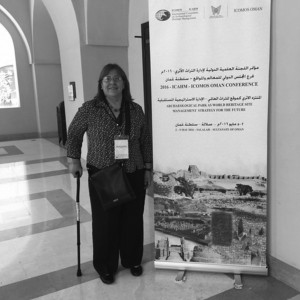
Nelly M. Robles García
Centro INAH Oaxaca
Practical information
Monday to Sunday from 10:00 to 16:00 hrs. Last entry 15:00 hrs.
$95.00 pesos
Se localiza en los valles centrales de Oaxaca.
Services
-
+52 (951) 568 0316
-
This email address is being protected from spambots. You need JavaScript enabled to view it.
-
FACEBOOK
Directory
Jefe de la Zona Arqueológica
Leobardo Daniel Pacheco Arias
This email address is being protected from spambots. You need JavaScript enabled to view it.


